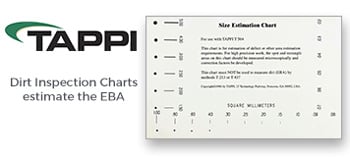Three on three-the magnificent supervision tool, Solutions!, Online Exclusives, March 2005, Vol. 88(3)
What an idea! It was in the 1980s, when I owned a manufacturers representative sales agency, that I heard Patricia Fripp talking about this idea in one of her success seminars. I tried the idea with my sales team and it worked magnificently. For more than a decade now, I too have been sharing this tool with audiences across North America and have received numerous notes of success from attendees.
Let me first warn you-while this tool is simple to understand and quite easy to use, if executed incorrectly, it can be crushing to your ego. But, what the heck-as a leader, it is your job to leave your ego at the door when you come to work each day.
The value
The important value you will receive from this tool is that of knowing what perceptions your employees hold about you and their work environment. I absolutely believe that in every company-no matter how caring the company is toward employees-there exists a metaphorical two-story outhouse. Since we all know what flows downhill, managers must be concerned with determining how to dismantle any barrier between you and your employees, no matter how inconsequential you believe it to be. Learning the perceptions of your employees is key to bettering the work environment for them. It is also helpful for creating an open-door "safety net" that will allow employees to operate in an environment that encourages them to point out overlooked mistakes before they become costly catastrophes.
The tool
The brief description of this tool is to sit down with your key employees, department heads or executive team members-one at a time-and ask them to share with you three things that they do not like about how you manage them and the organization. Then to ask them to share with you three things they do like.
In order for you to successfully use this tool you need to realize that your employees will be very skeptical at first. They will wonder what’s gotten into you-what is your true motivation in asking these questions? Also, you must be aware of the fact that they will "feel the water before jumping in." That is, they will test you first before they will share their true perceptions. With this being stated, be cautious to only thank them for their answers, rather than to question or challenge their answers in a knee-jerk fashion. If you do not understand what they are saying, it is okay to ask for clarification; but any other comment other than a "thank you" will greatly diminish your employees’ willingness to take a risk and tell you the truth.
Tool implementation
Select the employee with whom you believe you have the best relationship for your first go at the Three on Three. Do this because you will be the most at ease with this person. After your first success, each consecutive session gets easier to conduct.
- Find a neutral location (your office is not acceptable) and sit them down in a relaxed atmosphere.
- Tell your employee that you have a desire to improve your management style and the work environment for all the employees.
- Ask them for their help in honestly answering some questions.
- Assure them that nothing they say will ever be held against them in the future.
- Now ask them to share three things with you that they don’t like about your management style or the work environment. Remember, with the first answer, an employee is usually "testing the water." This means that, even if you feel like you’ve just been stabbed in the heart, you must only reply with, "Thank you."
Repeat step #5 two more times. Generally, the second or perhaps third response is where you hit gold and get some real feedback.
In a sincere manner, tell them that you will work on what they said and that you will get back to them in a week or two to discuss what you have done about the items they shared.
Now you can ask for three things they do like about your management style and the work environment. Again, only respond with, "Thank you." This is not the time to puff up your chest and talk about your greatness. After the third positive response assure them that you are going to try to do more of those things in the future.
The master key to this whole process is that you MUST get back with this employee in the week or two that you promised and have completed some definitive action toward improvement on at least one of the items they shared with you as being a problem-some action toward all three issues is optimal.
Work through this "Three on Three" process with your key people at least twice a year-quarterly is better. By this time next year, I guarantee that you will have noticed results.
About the author:
Ed Rigsbee, CSP is the author of PartnerShift, Developing Strategic Alliances and The Art of Partnering. Rigsbee has more than 1,000 published articles to his credit and is a regular keynote presenter at corporate and trade association conferences across North America. He can be reached at 800-839-1520, ed@rigsbee.com, or visit www.rigsbee.com.





